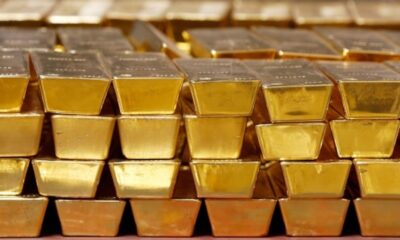Business
China’s Solar Industry Faces $60 Billion Setback Amid Job Cuts

The solar industry in China has experienced a significant downturn, with major firms shedding nearly one-third of their workforces last year, according to a Reuters analysis of company filings. The five largest solar companies, including Longi Green Energy, Trina Solar, Jinko Solar, JA Solar, and Tongwei, collectively reduced their employee counts by approximately 87,000, averaging a 31% workforce reduction. This drastic measure reflects the pressures resulting from intense price competition and a challenging market environment.
Falling prices have created severe financial losses within the industry, prompting many companies to take drastic actions. The overcapacity issue is particularly pronounced, as China produces double the number of solar panels it consumes annually, primarily within its borders. Analysts indicate that the job losses stem from a combination of layoffs and attrition, as firms sought to manage operational costs amidst diminishing demand. The political climate in China complicates matters, as layoffs are seen as a threat to social stability, leading to a lack of transparency regarding actual employment figures.
Despite the alarming job cuts, only Longi Green Energy openly acknowledged a reduction of 5% last year. Other companies have remained silent on the cutbacks, and the official unemployment rate in China has remained stagnant at 5% for five years, raising questions about the accuracy of such statistics.
Industry Struggles and Central Planning Consequences
The solar industry has faced a downturn since late 2023, with forecasts indicating further challenges in 2024 and beyond. Over 40 solar firms have either delisted, filed for bankruptcy, or been acquired since 2024, according to information shared by the photovoltaic industry association. This situation results from rapid factory expansions between 2020 and 2023, prompted by state directives to bolster what were termed the “new three” growth industries: solar energy, electric vehicles, and batteries.
The unintended consequence of this aggressive expansion was a collapse in production prices, exacerbated by U.S. tariffs targeting Chinese exports from Southeast Asia. The result was a staggering loss of $60 billion for the industry last year. Beijing has signaled its intention to intervene, with polysilicon prices soaring nearly 70% in July, while solar panel prices have seen more modest increases.
Despite these indicators, both domestic and international demand for solar products remains weak. GCL, a major polysilicon producer, announced plans to form an OPEC-like organization to manage production and pricing within the industry.
Government Responses and Future Outlook
In early July, President Xi Jinping called for an end to “disorderly price competition,” and the Ministry of Industry pledged to stabilize prices and eliminate outdated production capacities. Although no specific timeline for these interventions has been provided, sources suggest that the government aims to address the overcapacity issue before the conclusion of the current five-year plan.
Local officials in Anhui province, a key manufacturing region, have urged solar companies to halt new manufacturing initiatives and close production lines operating below 30% capacity. However, many provincial governments may hesitate to implement strict measures, fearing the impact on local employment and economic growth.
Analysts, including Cheng Wang from Morningstar, highlight that up to 30% of manufacturing capacity may need to be cut for companies to regain profitability. The current situation in China’s solar sector mirrors challenges faced in other industries, such as steel and cement, where overcapacity has led to financial woes.
The future for China’s solar industry remains uncertain, with significant adjustments required to return to a sustainable model. As the sector grapples with its internal struggles, it faces the broader challenge of aligning production with actual demand, both domestically and internationally. The repercussions of this crisis may extend beyond the solar industry, signaling potential difficulties ahead for other sectors as well.
-

 Politics4 weeks ago
Politics4 weeks agoSecwepemc First Nation Seeks Aboriginal Title Over Kamloops Area
-

 World5 months ago
World5 months agoScientists Unearth Ancient Antarctic Ice to Unlock Climate Secrets
-

 Entertainment5 months ago
Entertainment5 months agoTrump and McCormick to Announce $70 Billion Energy Investments
-

 Science5 months ago
Science5 months agoFour Astronauts Return to Earth After International Space Station Mission
-

 Lifestyle5 months ago
Lifestyle5 months agoTransLink Launches Food Truck Program to Boost Revenue in Vancouver
-

 Technology3 months ago
Technology3 months agoApple Notes Enhances Functionality with Markdown Support in macOS 26
-

 Lifestyle3 months ago
Lifestyle3 months agoManitoba’s Burger Champion Shines Again Amid Dining Innovations
-

 Top Stories2 months ago
Top Stories2 months agoUrgent Update: Fatal Crash on Highway 99 Claims Life of Pitt Meadows Man
-

 Politics4 months ago
Politics4 months agoUkrainian Tennis Star Elina Svitolina Faces Death Threats Online
-

 Sports5 months ago
Sports5 months agoSearch Underway for Missing Hunter Amid Hokkaido Bear Emergency
-

 Politics5 months ago
Politics5 months agoCarney Engages First Nations Leaders at Development Law Summit
-

 Technology5 months ago
Technology5 months agoFrosthaven Launches Early Access on July 31, 2025





















